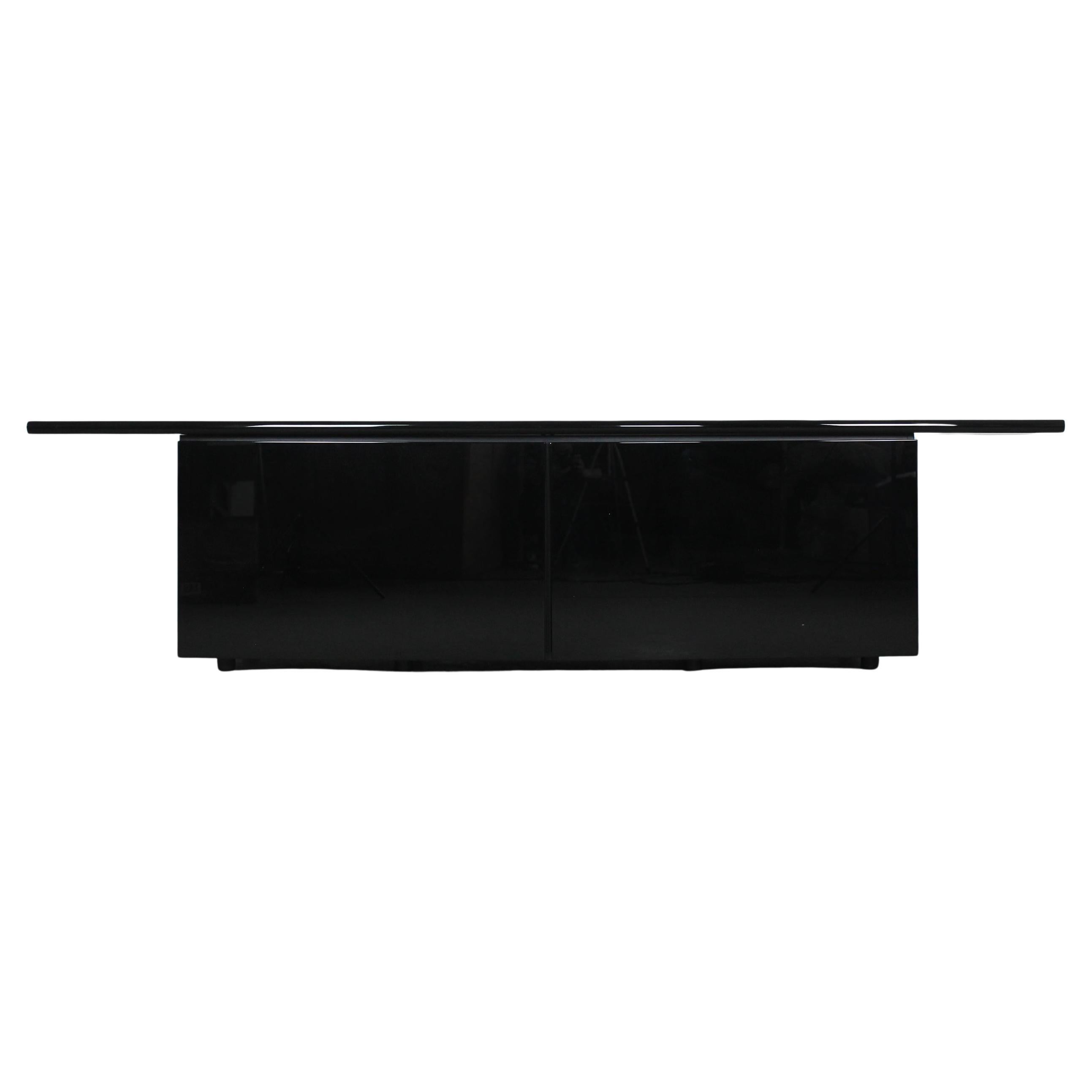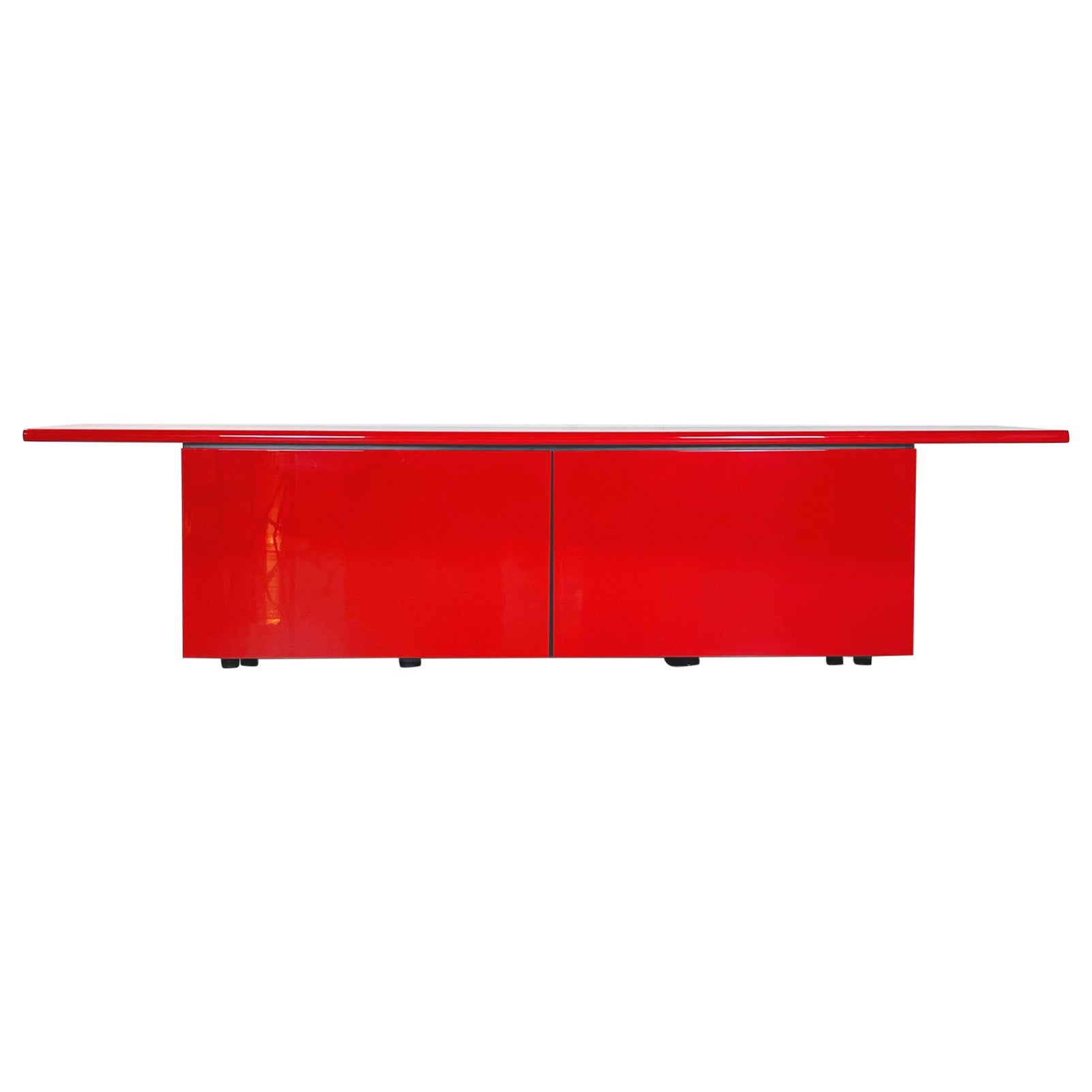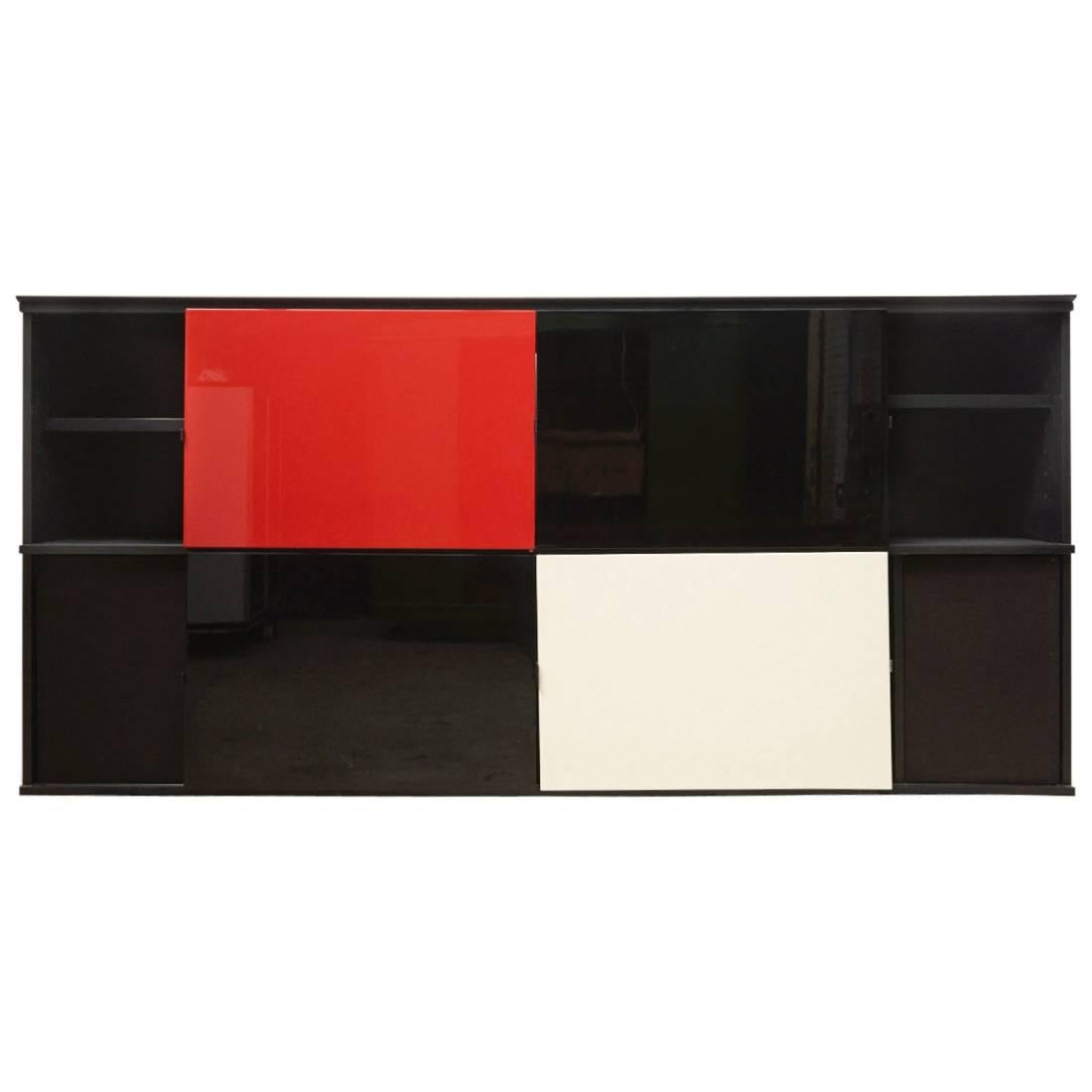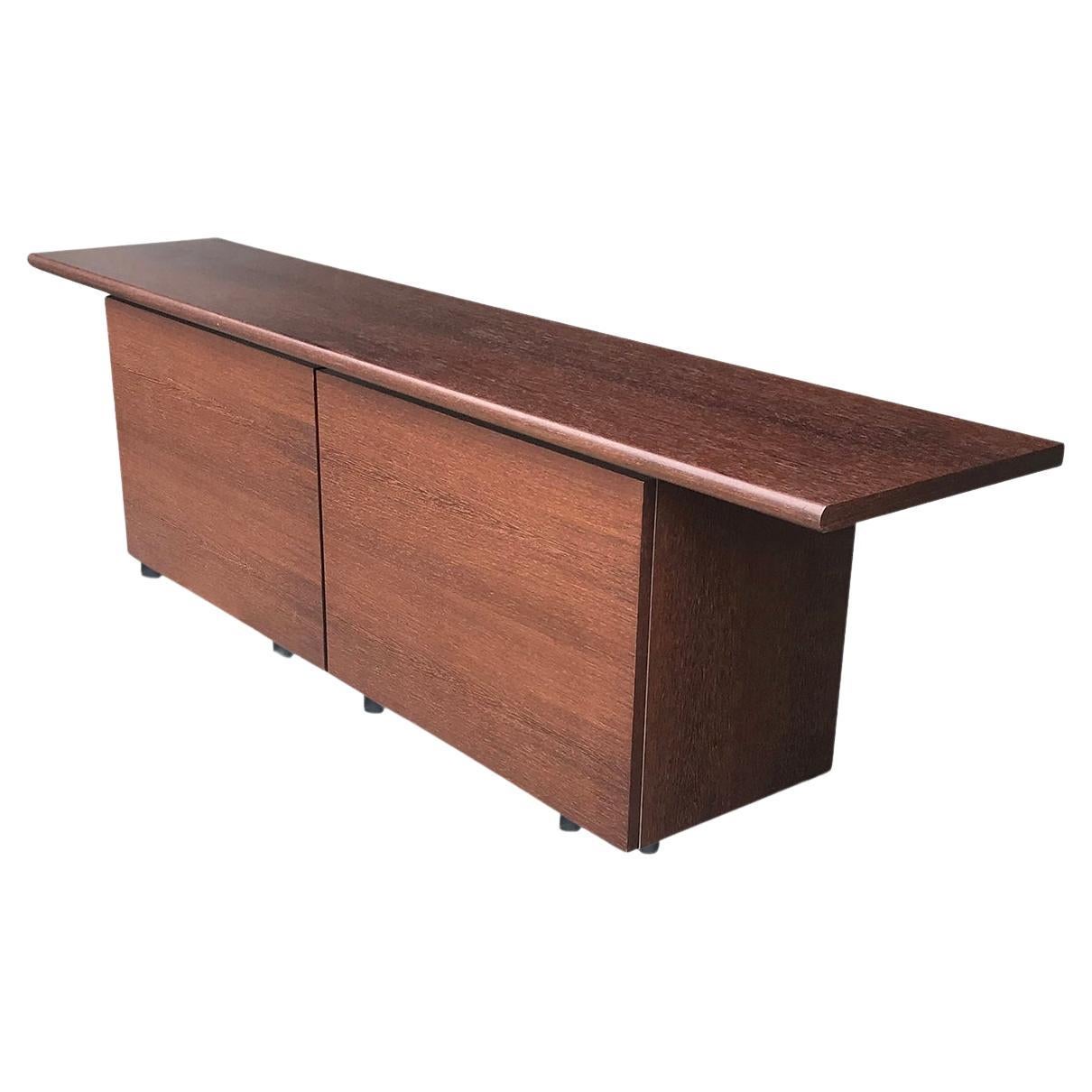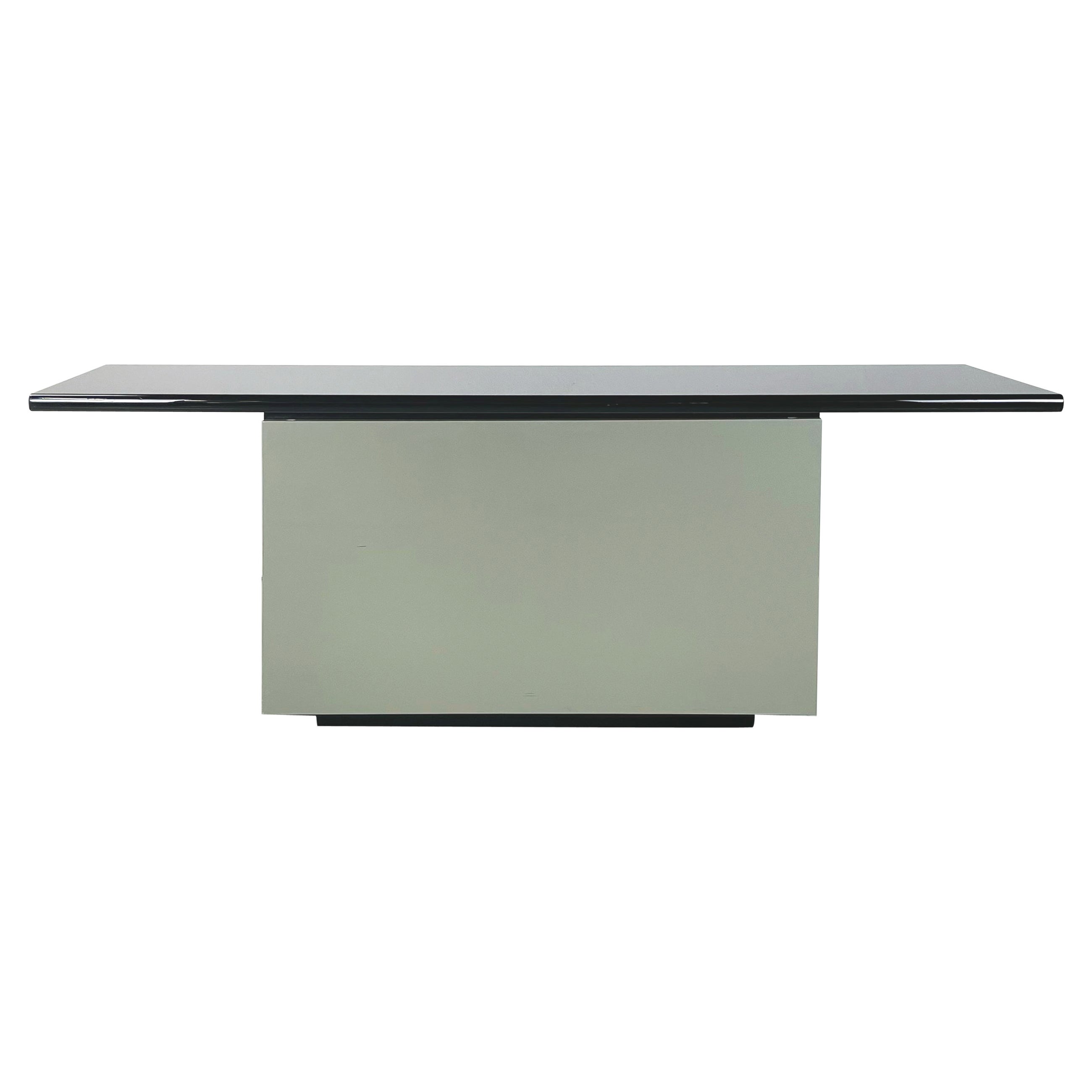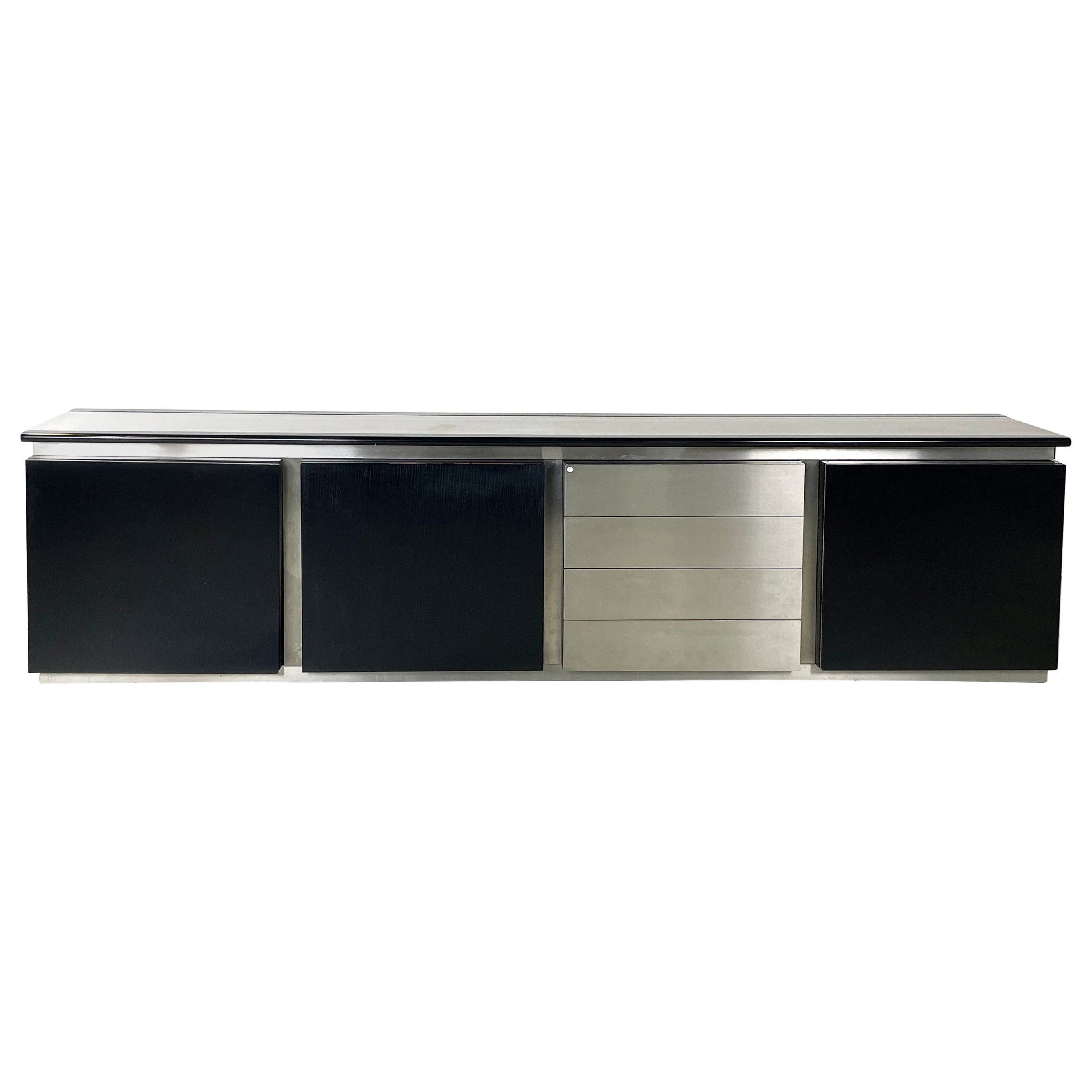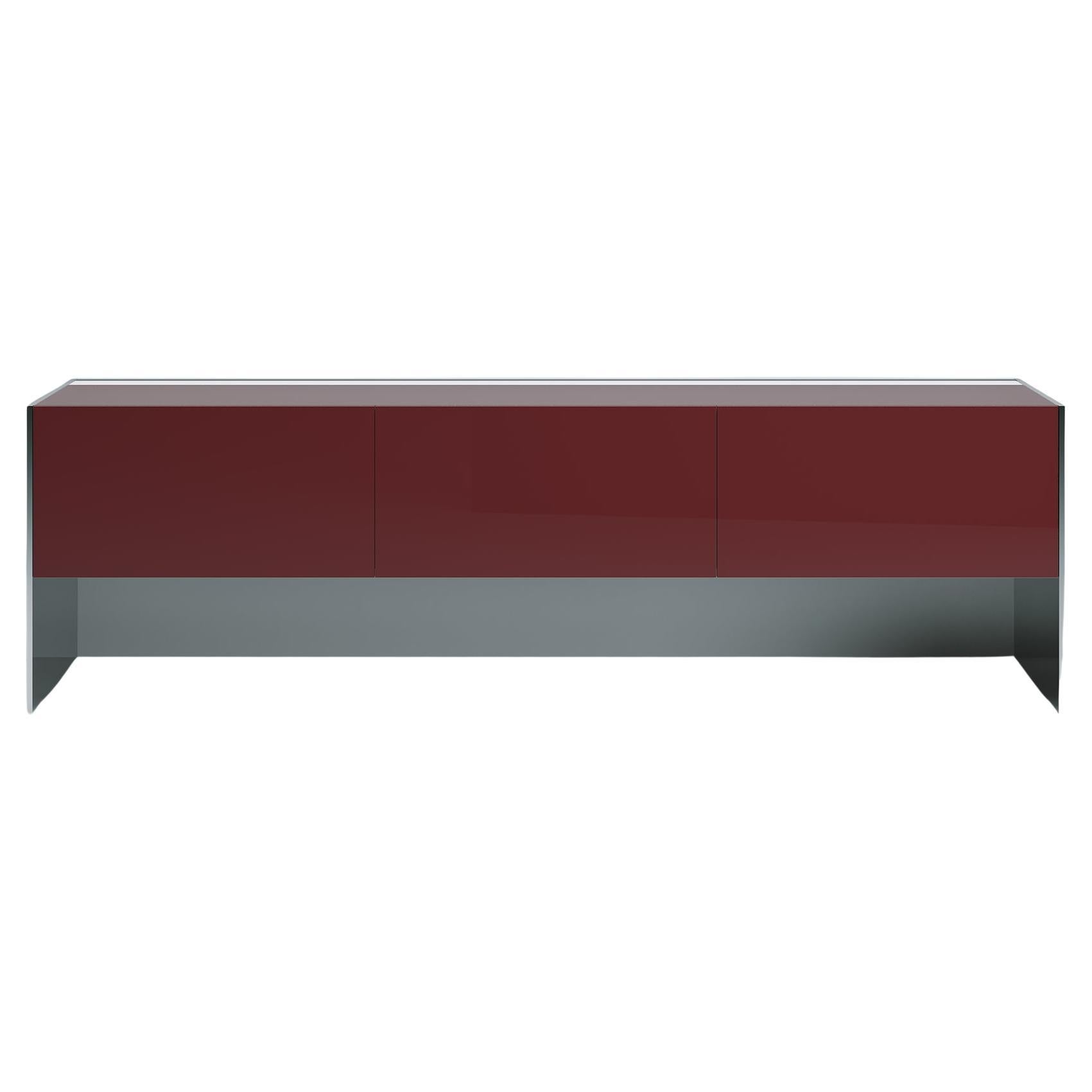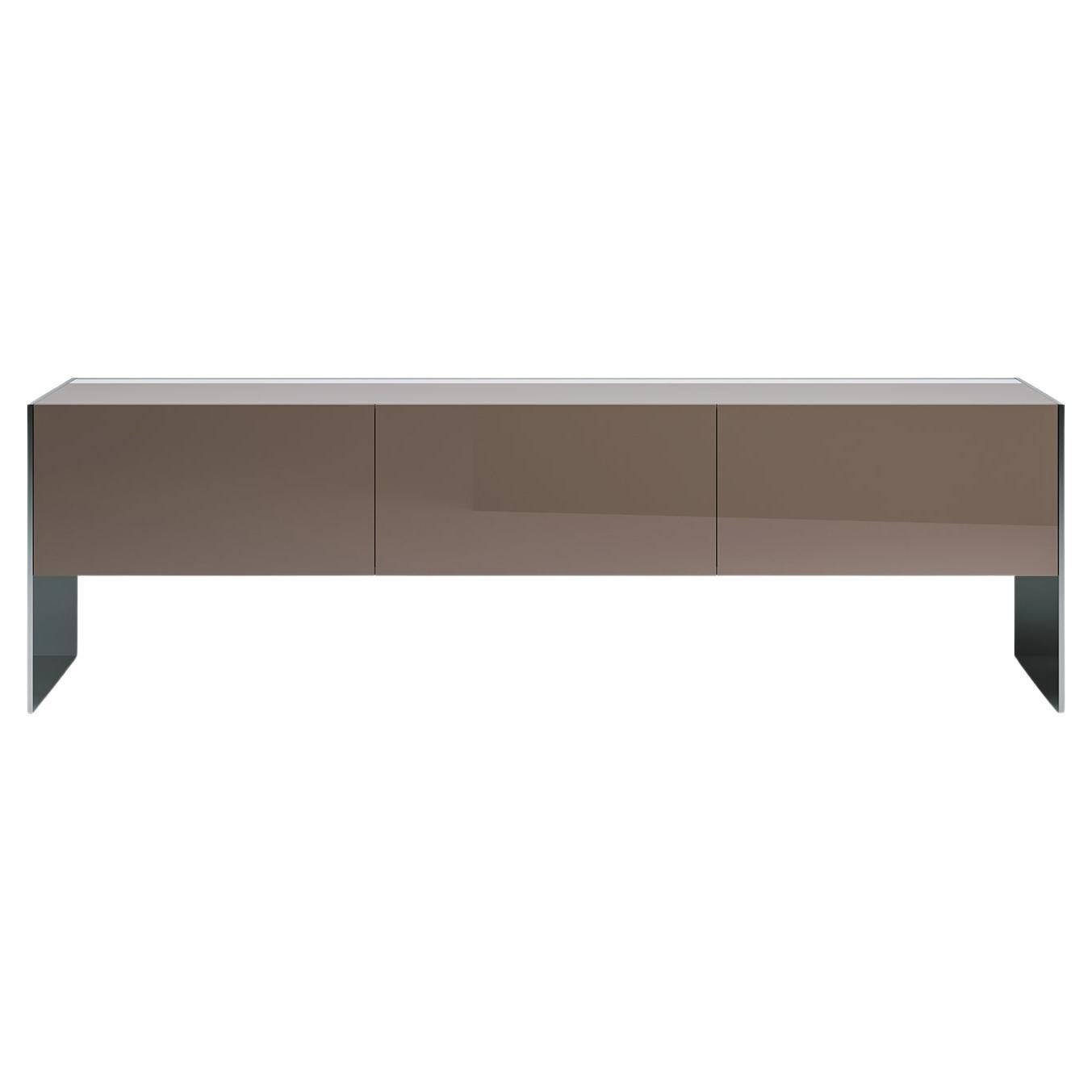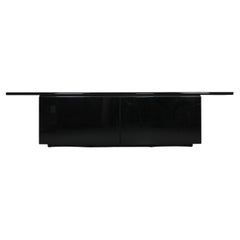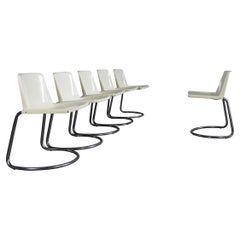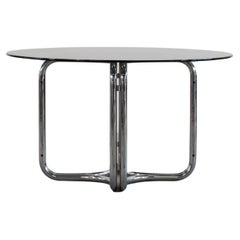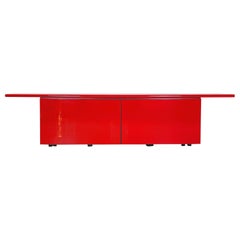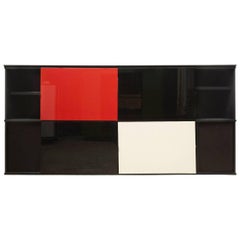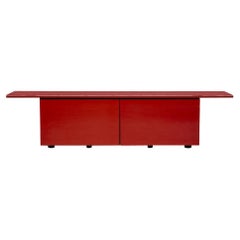
Giotto Stoppino Sheraton Red Wooden Sideboard Acerbis, 1977, Italy
View Similar Items
Want more images or videos?
Request additional images or videos from the seller
1 of 10
Giotto Stoppino Sheraton Red Wooden Sideboard Acerbis, 1977, Italy
About the Item
- Creator:Giotto Stoppino (Designer),Lodovico Acerbis (Manufacturer)
- Dimensions:Height: 33.47 in (85 cm)Width: 112.21 in (285 cm)Depth: 19.69 in (50 cm)
- Style:Mid-Century Modern (Of the Period)
- Materials and Techniques:
- Place of Origin:
- Period:
- Date of Manufacture:1977
- Condition:
- Seller Location:Montecatini Terme, IT
- Reference Number:1stDibs: LU5304223923862
About the Seller
4.9
Platinum Seller
These expertly vetted sellers are 1stDibs' most experienced sellers and are rated highest by our customers.
1stDibs seller since 2020
102 sales on 1stDibs
More From This SellerView All
- Giotto Stoppino Sheraton Sideboard in Black Lacquered Wood by Acerbis 1977By Giotto Stoppino, AcerbisLocated in Montecatini Terme, ITSheraton sideboard presents two sliding doors that slide outward to expose three inner storage units with glass shelves and four drawers on the central part. The sideboard has a str...Category
Vintage 1970s Italian Mid-Century Modern Sideboards
MaterialsLaminate, Wood, Ash
- Giotto Stoppino Set of Six White Alessia Chairs by Driade 1970s ItalyBy Driade, Giotto StoppinoLocated in Montecatini Terme, ITSet of six Alessia chairs with legs in tubular chromed metal and seats in white ABS, designed by Giotto Stoppino and manufactured by Driade in the 1970s. (Manufacturer's brand visi...Category
Vintage 1970s Italian Mid-Century Modern Chairs
MaterialsMetal
$2,284 Sale Price / set20% Off - Giotto Stoppino Round Table with Steel Base and Glass Top 1970s ItalyBy Giotto StoppinoLocated in Montecatini Terme, ITA round-shape dining table with a steel base and glass on top, designed by Giotto Stoppino, Italian Manufacture, 1970s. Giotto Stoppino has been one of the architects that inspired ...Category
Vintage 1970s Italian Post-Modern Tables
MaterialsSteel
$1,230 Sale Price20% Off - Emilio Lancia Large Sideboard in Walnut Wood Italian Manufacture 1930sBy Emilio LanciaLocated in Montecatini Terme, ITA mid-century sideboard with structure in walnut veneer with brass details, the sideboard presents three doors and six inner shelves. Designed by Emilio Lancia, Italian manufacture ...Category
Vintage 1930s Italian Mid-Century Modern Sideboards
MaterialsBrass
- Pier Luigi Colli Large Sideboard in Wood with Drawers Italian Manufacturer 1930sBy Pier Luigi ColliLocated in Montecatini Terme, ITLarge sideboard is entirely realized in oak wood, with four drawers on each side (for a total of eight drawers) and a central storage unit. Designed by Pier Luigi Colli Italian Manufacture from 1938 ca. To reconstruct the story of Pier Luigi Colli, we must take a leap back to the 19th century in Turin, a multifaceted city, in some ways controversial due to its austere and sometimes introverted character, but at the core of a creative drive: and if it is primarily known for its automobile industry, there was a time when Turin was at the height of fame also in the field of furniture and embroidery, thanks to the presence of two entrepreneurial realities. On the one hand there was the MIRAM (Italian Hand-Made Embroidery Manufacture) founded by Pietro Colli in 1850, specializing in gobelin fabrics and bandera embroideries. His daughter Teresa traveled between Italy and Paris to discover the latest trends in fabrics and embroidery, while her younger brother, Pier Luigi Colli (1895-1968), the star of this story, joined the company in 1921. Distinguishing himself for his enterprising personality and willing to continue his father's profession, Pier Luigi was known to his contemporaries as "the artist interior designer", and had no doubts about his future: he moved temporarily to Paris, where he attended L'Ecole des Beaux Arts Décoratives. The other great Turin manufacturer to be mentioned is Martinotti, founded in 1931 by Giuseppe Martinotti and supplier of fine furnishings for the Savoy court, pieces which were characterized by a typically 19th century eclectic style, generally made of exotic woods featuring ivory and tortoiseshell inlays: at that time, Martinotti represented the top of internationality, having even participated in the 1875 Philadelphia exhibition! The two brands' fate merged in 1902, a decisive year for Turin which, hosting the International Exhibition of Modern Decorative Art, became the cradle of the spread of the Liberty style in Italy. In the exhibition, Martinotti exhibited an elegant interior, in which all the textile parts, from the curtains to the seat upholstery, was made by Colli. It was in 1926 that Colli (MIRAM) finally acquired Martinotti, founding a laboratory where, from the savoir faire of the two companies, complete pieces of furniture were created and tailor-made for the customer, from the structure to its upholstery. Meanwhile, Pier Luigi Colli was living in Paris, the ideal place to be in 1925, when the International Exhibition of Modern Decorative and Industrial Arts brought him closer to the work of one of his putative fathers, the great French cabinet maker Jacques-Émile Ruhlmann (Paris, 1879 - 1933). Thanks to Paris, Pier Luigi intertwined contacts with the international beau monde, he started to import Lalique glass from France, while the Colli's clientele expanded and special commissions arrived, such as the creation of the Royal Train of the Savoy family made with Fiat, or the lecture hall in the University of Turin. The success of a brand is also measured by its openness to establishing collaborations with the great designers of its time, in the case of Colli resulting in important creative partnerships: from Gio Ponti, who relied on the brand for his Richard Ginori project in Rome, up to Carlo Mollino, who created with Colli the handrails of the RAI (national TV) auditorium and the windows of the Teatro Regio in Turin; also in Turin, the Morbelli architects collaborated with Colli for the furnishings of the RAI skyscraper, and the architects Gabetti Isola for the interiors of the Stock Exchange in Turin. In the 40s and 50s, having opened a branch in Rome, Colli was at the peak of productivity. The embroidery and textile section continued to be one of its strengths, keeping alive the relations with France and its great masters: among the inspirations were the geometric shapes of the fabrics of Ruhlmann's interiors, or the tactile carpets made by designer Mariod Dorn. And so, another Colli trademark become the "textured carpet...Category
Vintage 1930s Italian Mid-Century Modern Sideboards
MaterialsWood, Oak
- Giovanni Michelucci Torbecchia Sideboard in Walnut Wood by Poltronova 1964By Giovanni Michelucci, PoltronovaLocated in Montecatini Terme, ITTorbecchia sideboard is entirely realized in solid veneered walnut wood, with two frontal hinging doors (inner shelves), two drawers, and a storage unit under the openable top part. ...Category
Vintage 1960s Italian Mid-Century Modern Sideboards
MaterialsWalnut, Wood
You May Also Like
- Italian Modern Red Sideboard Sheraton by Stoppino and Acerbis for Acerbis, 1977By Lodovico Acerbis and Giotto Stoppino, AcerbisLocated in MIlano, ITItalian modern Red Sideboard Sheraton by Giotto Stoppino and Lodovico Acerbis for Acerbis, 1977 Sideboard mod. Sheraton in glossy lacquered wood in bright red and black. The rectang...Category
Vintage 1980s Modern Sideboards
MaterialsMetal
- Acerbis 1980s Sideboard Designed by Lodovico Acerbis and Giotto StoppinoBy Acerbis, Giotto StoppinoLocated in Antwerp, BESoffio di Vento was a creation penned by Lodovico Acerbis and Giotto Stoppino that went beyond the simple need to contain with free sliding doors to avoid any pre-defined open or clo...Category
Vintage 1980s Italian Mid-Century Modern Sideboards
MaterialsWood
$3,962 Sale Price39% Off - Postmodern Sheraton sideboard by Giotto Stoppino for Acerbis Italy 1980sBy Lodovico Acerbis and Giotto StoppinoLocated in Stavenisse, NLImpressive design from Giotto Stoppino dating from 1977, a postmodern interpretation on the Italian classic credenza design. The Sheraton is characterized by its oversized top, stic...Category
Vintage 1980s Italian Post-Modern Sideboards
MaterialsGlass, Plastic, Wood, Wenge
- Italian Vintage Sheraton Sideboard by Giotto Stoppino for Arcebis BlackBy Acerbis, Giotto Stoppino, Acerbis Design, Lodovico Acerbis and Giotto StoppinoLocated in Alsdorf, NWDiscover the Italian Vintage Sheraton Sideboard, a masterpiece of design by the renowned Giotto Stoppino for Arcebis. This sideboard, originating from mid-century Italy, is a prime e...Category
Mid-20th Century Italian Mid-Century Modern Sideboards
MaterialsWood, Lacquer
- Italian Modern Parioli Sideboard by Stoppino and Acerbis for Acerbis, 1950sBy Marco Acerbis, Acerbis, Giotto StoppinoLocated in MIlano, ITItalian modern solid wood and aluminium Parioli sideboard by Giotto Stoppino and Marco Acerbis for Acerbis, 1950s. Parioli model sideboard, with sol...Category
Vintage 1980s Italian Post-Modern Sideboards
MaterialsAluminum
- Italian modern Sideboard Sheraton by Stoppino and Acerbis for Acerbis, 1980sBy Lodovico Acerbis and Giotto Stoppino, AcerbisLocated in MIlano, ITItalian modern Sideboard Sheraton by Giotto Stoppino and Lodovico Acerbis for Acerbis, 1980s Sideboard mod. Sheraton in light gray and black lacquered wood. The rectangular top has a...Category
Vintage 1980s Italian Modern Cabinets
MaterialsMetal
Recently Viewed
View AllMore Ways To Browse
Sheraton Sideboard Acerbis
Giotto Stoppino Sheraton
Acerbis Sheraton
Sheraton Sideboard Giotto
Arch Sideboard
Modern Italian Console Sideboard
Long Solid Wood Side Cabinet
Danish Modern Drawers Low
Green Stone Credenza
Mid Century Sideboard Solid Wood
Two Tier Two Drawers
Enfilade Art Nouveau
Fresco Gplan
White And Newton Teak Sideboard
Gancho Sideboard
Jorrit Tornquist
Karelian Birch Sideboard
Michael Rothenstein
